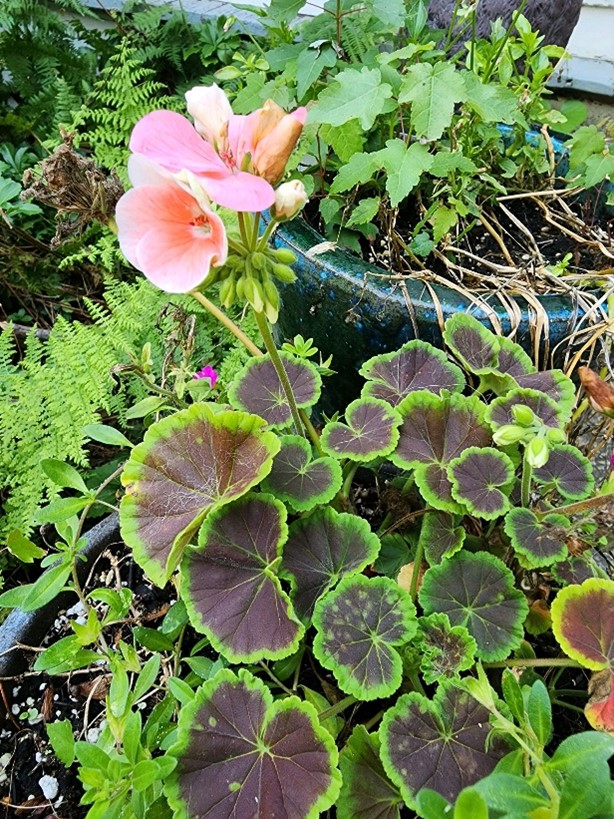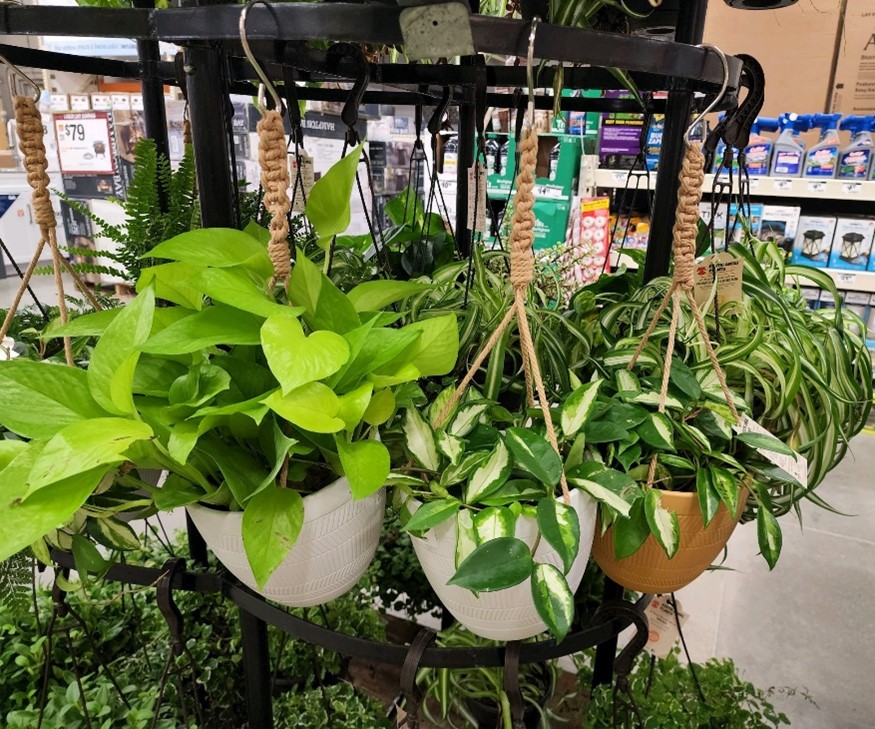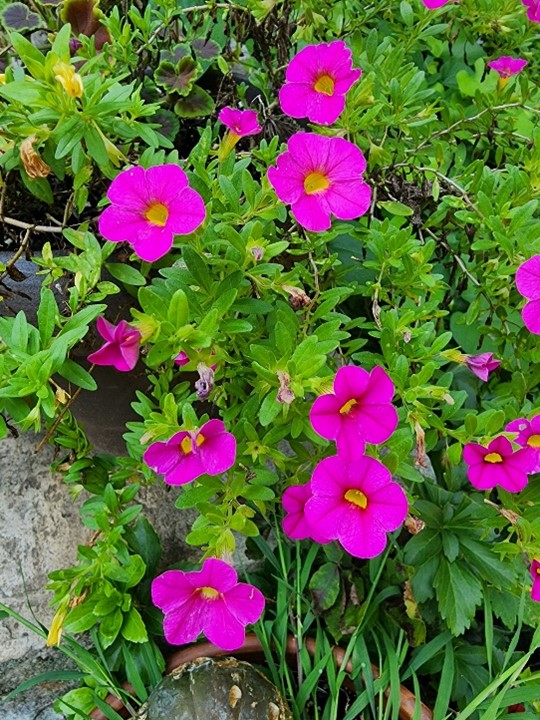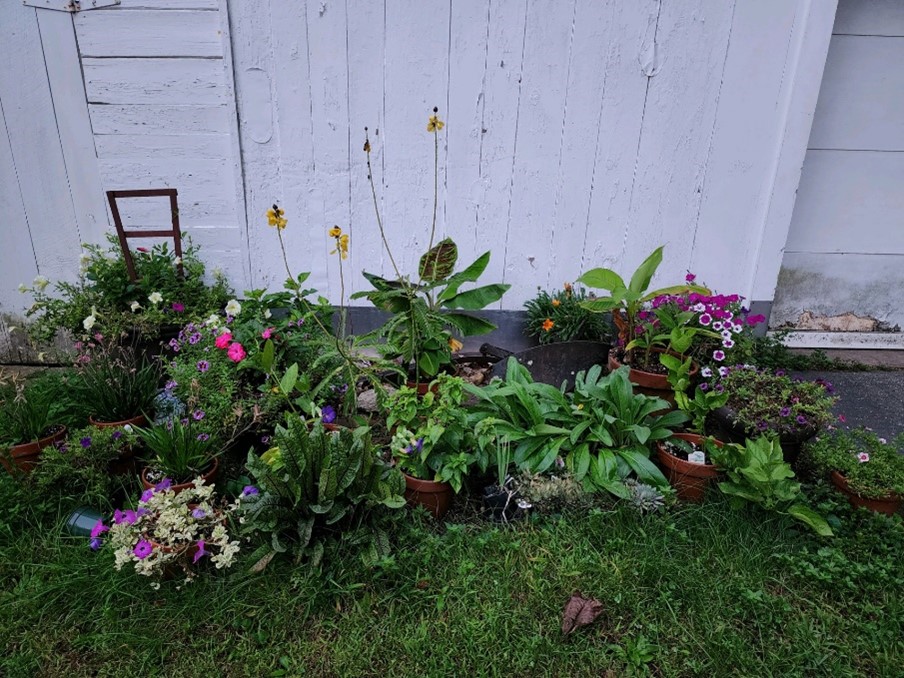I don’t want to depress anyone, but its almost over. Winter is coming, and it will come fast, thereby ending our beautiful growing weather. We can enjoy the last few days of warm weather before the nights start getting significantly cooler. Fairly soon, when temps start dipping below 50oF, we should be bringing in our houseplants. Not everything that beautified our yard all summer needs to fall victim to Old Man Winter, however. Some plants can winter over nicely and be saved for next year.

The first thing to understand is that you will be going from one extreme to another. The amount of solar radiation outside compared to what is inside is literally going from one end of the spectrum to the other. A brightly lit window, even if sunny, does not really compare to unfiltered direct sun. Fluorescent or LED light fixtures are great, but they need to be close to the plants (right above, nearly touching). The more lights the better. There are higher powered artificial lights available (like high intensity discharge, sodium lights, metal halide, etc.), but these are not something seen in the common home. Either way, leaves are adapted to the light they are accustomed to, so when going from one extreme to another, you will probably lose some. The best example of this is buying a pothos at a greenhouse or home improvement store, then bringing it home. Leaf loss is normal, especially in the lower/shaded leaves. The plants still look nice, but they are much thinner. If your plant’s journey to the inside is going from shade outside to bright window inside, that generally is not too bad and leaf loss may be minimal.

There are a number of hitchhikers that can enter our home when we bring our plants inside. The first, and worst, is the mosquito. If your tray has some water in it, then you might accidentally introduce these into your home. They won’t last too long, but you will wake up with some annoying itchy bumps! Spiders are the next most common. They are normally good, and eat some pests that like our plants, but their webs can get annoying. Their presence triggers many horror-movie like reactions in most people as well. Earwigs are another annoying little critter. Their pincers on the back end look intimidating. They usually do not do too much damage to your plants. Avoid overwatering the plant which will allow them a moist space in which to survive. One of the most interesting visitors I ever had was a frog! Luckily, I was able to capture him and release him back outside. Usually frogs or toads can be spotted if you carefully inspect your plant. They are more likely to be found under the saucer or pot than inside of it.
Some of my favorite out-for-the-summer plants are banana, various citrus, and fig trees. These do not need a ton of light over the winter either. I like to place them in a cool basement under one light and water sparingly. The first chance I get to move them out in the spring I take it. I like to freshen the potting mix they are planted in and add some fertilizer at that time as well. They tolerate this type of cultivation fabulously.
In addition to bringing in houseplants, there are some of our annuals that can make fine additions to the home. My absolute favorite are the geraniums. Many times throughout history, these plants were kept in greenhouses or conservatories year-round. A friend of mine said she likes to bring in some coleus. Both of these plants are rather expensive, and it might be nice to save some for next year. There are a number of people that like to overwinter their pepper plants. I find that the best for this are the really hot ones that seem to grow slowly like the habanero. The following year you will have more peppers than you know what to do with. For a number of years, I brought in a large, not-so-hardy rosemary plant.
There are some very pretty plants which just do not seem to do well indoors. The first that comes to mind is the calibrachoa. Although beautiful outside, they seem to struggle indoors. They are not very forgiving if they get too dry. They easily and almost always suffer from western flower thrips as well. I really do not want to deal with spraying pesticides indoors all winter. The same story is true for petunias. Most bedding plants are best left outside – purchase new ones in the spring. Another pest that you need to watch out for are aphids. There are many species of all different colors. If a few sneak in, they can quickly reproduce asexually. The females essentially clone themselves.

No matter what you bring in from outside, I recommending isolating it from your regular indoor houseplants for a few weeks. This is best done in a separate room with the door closed. Any trouble should present itself by then. After the quarantine period, your plants may become a part of your regular collection, or you might simply set them up under some lights in the basement. Be careful with watering. Cold and soggy soil are a perfect recipe for disease. You don’t have to wait too long before it is spring again! Keep the plants out of real drafty areas that favor the development of diseases as well.
The last piece of advice is that you may not want to bring in the entire plant. For year I kept my geranium collection going by taking a few cuttings of each plant. These overwintered nicely, took up less space, and required less care. I could fit my whole collection under a few lights. By the time the spring rolled around, I had nice plants with strong root system ready for a pot. Figs can be grown in this way too (or you might simply want more fig trees).

By bringing in some of your favorite annuals, it might help ward off the winter blues. It could save you a little bit of money in the spring, or simply allow you to expand an existing collection of plants. I wonder how many geranium varieties I could have if I just took a few cuttings in each fall? The following spring, I could buy additional varieties. This kind of thinking makes for a large plant collection!
Matt Lisy
